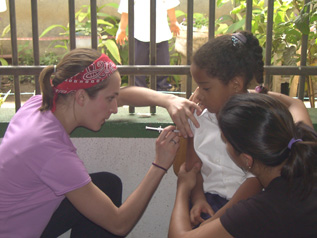 |
Julie Ruma, a second-year medical student, vaccinates a Nicaraguan child. She is assisted by Maricel Johnson, a nurse practitioner student. |
UNMC sponsored medical missions to Falmouth, Jamaica; Managua and Jinotepe, Nicaragua; and the Sisseton Indian Health Service facility in South Dakota. The international students brought all their own medical supplies with them, including donated pharmaceutical drugs. They also collected donated clothing and toys for pediatric patients. Instead of white sand beaches for a week, SAGH members kept their white coats on last month for a non-stop week of clinic rotations and work in the community.
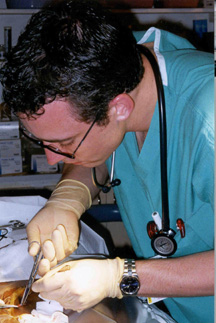 |
Greg Weber, a second-year medical student, removes a cyst on a Jamaican patient. |
“In addition to our clinic work, we did quite a bit of community outreach,” said Kate Swisher, a scond-year medical student and coordinator of the Jamaica mission team. “During a full day’s schedule, some people waited hours before we could get to them.
We did what we call ‘porch education’ – sitting and talking with patients waiting in line about diabetes, hypertension, HIV and AIDS. Many of these patients hadn’t been seen by a medical professional in years, if ever. We answered a lot of questions. The Falmouth clinic is only open during medical missions by teams such as ours, so by the time we show up the people have a lot of concerns they want addressed.”
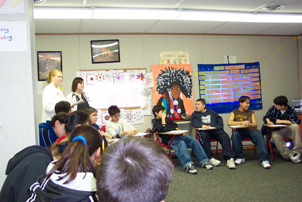 |
UNMC students share health education information with Sisseton students. |
The Nicaragua medical mission team increased from 11 to 19 members this year and covered two different locations. Twelve students, supervised by Polly Hulme, Ph.D., assistant professor in the College of Nursing, and Sara Pirtle, UNMC coordinator of International Studies and Programs, went to Managua, the capital city with more than one million citizens. The other seven students, supervised by Marvin Bittner, M.D., adjunct associate professor in the department of internal medicine, spent most of their working time in Diriamba (pop. 57,682), located near their host city of Jinotepe (pop. 42,000).
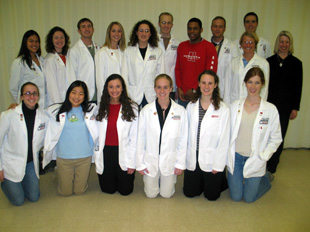 |
Students on the 2004 Nicaragua medical mission. |
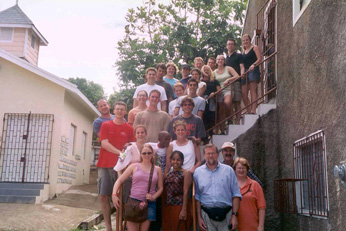 |
Students on the 2004 Jamaica medical mission. |
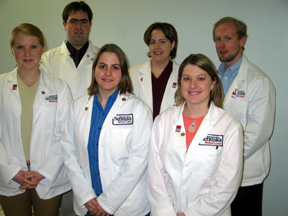 |
Students on the 2004 Sisseton medical mission. |
Six SAGH members spent their spring break working at the Sisseton Indian Health Service (IHS) health facility in Sisseton, S.D. The facility, built in 1936, is the primary source of medical care for more than 5,000 tribal members of the Lake Traverse Reservation, located in the extreme northeast corner of South Dakota. Team members shadowed physicians and physician assistants in the clinic, did overnight rotations in the emergency room, assisted in the on-site radiology and laboratory analysis departments, provided interactive anti-smoking presentations to three local tribal elementary school groups, and accompanied tribal social workers on rounds through the community.
“In Sisseton, I came to realize what a vital role the primary physicians play in remote areas, especially when referrals to specialists entail a much longer trip than down the hall,” said Megan Irwin, a first-year medical student. “The physicians were very much in contact with the community at a very personal level. I learned a very valuable lesson about the amount of teamwork necessary by all the health providers in a clinic as small as Sisseton.”